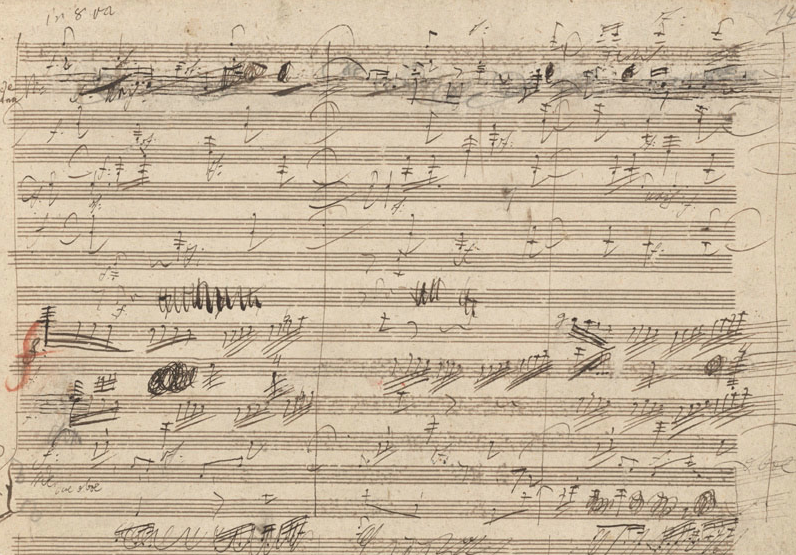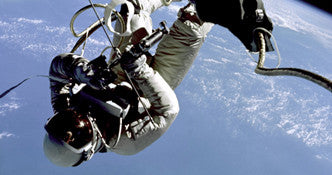Ode
$ 75.00
For orchestra - Proceed to purchase if you would like to buy a study score.
Conductor's Score and Performance Parts for RENTAL ONLY. Please send an email to info@aphramusic.com to request a rental application form.
Approximate Duration: 11'
PROGRAM NOTES
Beethoven's Ninth Symphony is one of the rare works of the repertoire that has attained, in addition to its vaulted musical status, a cultural and even political significance. The exalted setting of Schiller's "Ode to Joy" forever associated the work with a hope for peace and brotherhood, and generations of musicians have turned to the work at historic moments as the most universal expression of peace.
But the hope for peace so magnificently expressed in Beethoven's final symphony - written during a relative calm in the 19th Century - was ultimately frustrated by the events of the 20th Century. Two world wars and many tragedies later, Beethoven's great hope is needed as much as ever. But one wonders, with an eye to events past and present, whether such a hope can ever be fulfilled.
The piece begins as if in a dream, with fragments of the "Ode to Joy" floating over illusory harmonies in the orchestra, and soon focuses on the most characteristic fragment - the Ode's first three notes. This motif drives the transformation that follows - from a hopeful world of lyricism into a menacing, destructive fanfare of war. Along the way, we get a glimpse of the martial music of the 9th's last movement, which begins harmlessly but soon spins out of control. In the aftermath of the ensuing explosion - which, like weapons of mass destruction, leaves very little standing - a pulsating harmonic world floats downwards. It is the harmonies of the work's beginning, but in reverse, finally ending with the opening chord - an open fifth. Having begun with the theme that ends Beethoven's symphony, the work ends with his beginning: an uncertain world of harmonic ambiguity, articulated by a trembling in the strings - as we wait for something to happen.
INSTRUMENTATION
piccolo
2 flutes
2 oboes
1 Eb clarinet
2 Bb clarinets (2. doubling bass clarinet)
2 bassoons
contrabassoon
4 horns in F
3 trumpets in C (1.2. doubling slide whistle)
2 tenor trombones
bass trombone
tuba
timpani
percussion 1: crotales, log drum, marimba (preferably with lower extension), bass drum, sand-paper block & large square sandpaper board (approx. 2'x2'), xylophone, vibra-phone, high triangle, congas, vibraslap
percussion 2: triangle (such as that used in Beeth-oven 9), bamboo chimes, military drum, police whistle, anvil, pump shotgun (no loads)*, low tam-tam, low gong, 3 small tam-tams, 8 suspended cymbals, splash cymbal (all incrementally "pitched," as indicated at right), wind machine
percussion 3: glockenspiel, tubular bells, castanets piccolo snare drum, whip, crash cym-bals, siren
harp
piano
strings
* The shotgun is used for the sound of its pumping action. Great care should be taken to ensure the chamber has no loads in it whatsoever.
REVIEW
And never has a Beethoven's Ninth Symphony been so colored by the music that preceded it on the program. Mason Bates' Ode, commissioned by the Phoenix Symphony, takes the argument of the Beethoven and turns it backward, beginning with the joy and progressing back to the music of the first movement, and in so doing, chronicling how the world has developed since the Choral Symphony was written in 1827: war on war, destruction on destruction and the bloodiest century in history. Bates used part of the military march from the Beethoven to spin into the cacophonous climaxes that mimic the noise of war and leaves us with an ambivalent ending. So that when the Beethoven begins, and plays the music in the proper order, we have a different take on it." —The Arizona Republic
"...a truly striking piece written just last year, "Ode," by new talent Mason Bates. The Gershwin was given a committed and quite affecting treatment, while Bates' tone poem marshaled eclectic, even kaleidoscopic, modern dash. Its complexity expressed a sense of historical tragedy that Moody and the Festival Orchestra caught precisely for the highlight of this Spoleto finale." —Jack Dressler, Charleston Post and Courier, June 10, 2002




